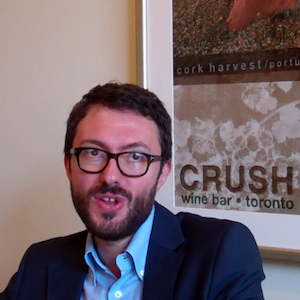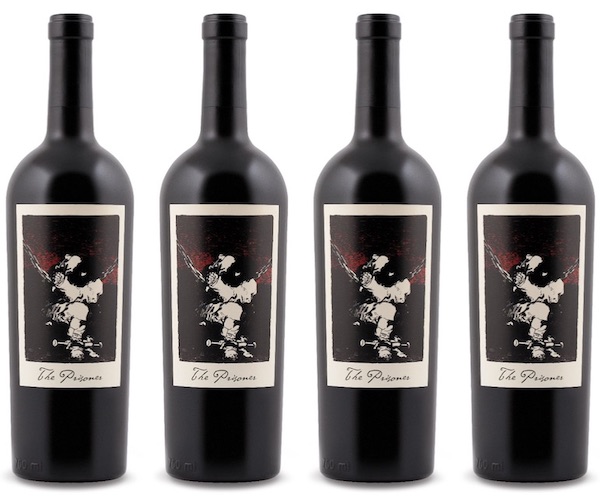
Left to right: Peter Boyd, Derek Valleau, Harsh Chawla and Norman Hardie at Pukka on St. Clair West.
Last fall I was lucky enough to attend a winemaker’s dinner for Norm Hardie. Like the offer a glass of Champagne, that’s not the sort of thing I turn down lightly, but what sweetened the deal all the more was the restaurant where it was held, Pukka on St. Clair West. Pukka is the fine dining Indian restaurant brainchild and baby of Harsh Chawla and Derek Valleau. Valleau is both a trained sommelier and restaurateur who made an impact on how we perceive Indian food in this city as founding partner at Amaya. So, Pukka is more than a step up from a typical curry house, it has a full blown wine program, consulted on by no less than Peter Boyd. Boyd is one of the city’s top sommeliers, most often associated with Scaramouche, but with a long CV comprising of many of the city’s hottest restaurants in more thna a few eras.
The dinner featuring Norman Hardie wines was an absolute success. His light, fruit forward and food friendly whites and Pinot Noirs complemented the intircate spice flavours of Pukka’s haute Indian cuisine. But there’s all,inds of wines on Pukka’s list, so I sat down with Boyd recently to discuss how he selects wines and suggests pairings at the restaurant.
This interview has been edited for clarity and style.
Peter Boyd poured me a glass of Müller Thurgau from Bozen, a cooperative producer from the Tyrolean area of Italy….
Good Food Revolution: Let’s start this conversation by me asking you, what’s the glass?
Peter Boyd: Oh sure. It’s an aromatic white from the Northeast of Italy. It’s a cooperative from the Alto Adige and we’ve had spectacular success with the whites and their reds, but especially their reds. The wine has enough aromatics to increase the sensation that it’s sweeter than it is, which is a sort of trick. Then, there’s a little bit of residual sugar, but not much. So, the effect of the wine is very much balanced; the acid is requisite and the flesh is almost perfect. And it just sings with the food here at Pukka. This style of wine is really the sort of hold card for what we do here. Rieslings work as well. Acids can be tricky on the red side, depending on what else is in the wine, but generally a looser and more forgiving wine works best.
GFR: So, when you’re trying to pair to dishes that might be a little short, in terms of spice, but also complex in terms of spice, are you trying to amplify what’s on the plate? Or correspond? What’s the strategy.
PB: Co-exist. I have had this situation with chefs before, God bless them. They tend to say, “What’s in the wine? I’m going to chase that and nail it down!” And, I’m thinking I have ten thousand wines to choose from, so why don’t you do what you want? And, I’ll chase you. That seems to work better.
GFR: OK, as a kind of 101, or an refresher for me, in terms of the danger of pairing wine to non-bland food, what can go wrong? High alcohol is the biggest problem, right?
PB: There are certain things you have to avoid. But because this kitchen is not necessarily chasing the old-style Vindaloo fire in your ears kind of dish, and because they’re more interest in breadth of flavour than amped up heat, that forgives a lot of higher alcohol wines. That was one of my big concerns going in. I said, ‘We have to avoid the higher alcohol wines.’ But the mantra here has been, basically, fruit forgives everything. So, the Malbecs, and the Shirazes and The Rhônes have been great. Grenache has been fantastic. On the negative side, the grapes that probably present the biggest problems and the biggest composite of “no go” would be something like Sangiovese – especially young Sangiovese. They tend to have bright acidity and fairly squared off tannins: stem tannins, gripping tannins. If you’ve got fruit that really needs some time to emerge, it’s no good to us now. Maybe ten years down the road, when all the rough edges come off it would work. Actually, that’s a good note to myself! I’ll have to see if I can round up a few older Sangioveses and bring them in to try.
GFR: Jamie [Drummond] said to ask you specifically about how well Grenache seems to work.
PB: Yeah, well it’s like the aromatic whites, Grenache seems to come in on a cloud. It’s got a berry fruit top note, there’s always liquorice, and depending on what it’s blended with, it’s a little amorphous. But Grenache has surprised me. It wasn’t on my list. Derek brought one in for a tasting once and it really worked’ it was the wine of the evening.
GFR: [To Derek Valleau who cam by our table] You’re also a sommelier by training, what are your thoughts?
Derek Valleau: Grenache can work really well. The typical order with Indian food is Gewürztraminer, but I think we’ve broken through that rule here now.
PB: We use Gewürzt, and Gewürzt works, but it nice to have a few more bullets in the bandolier. And, I’ve always liked messing with people’s preconceptions. Preconceptions are a dangerous thing to have!
 Malcolm Jolley is a founding editor of Good Food Revolution and Executive Director of Good Food Media, the company that publishes it. Follow him on Twitter or Facebook.
Malcolm Jolley is a founding editor of Good Food Revolution and Executive Director of Good Food Media, the company that publishes it. Follow him on Twitter or Facebook.








I wasn’t at the Pukka dinner but I was at the Norman Hardie dinner at Globe Bistro a few weeks back and I thought it was very good, what did you think of that one?